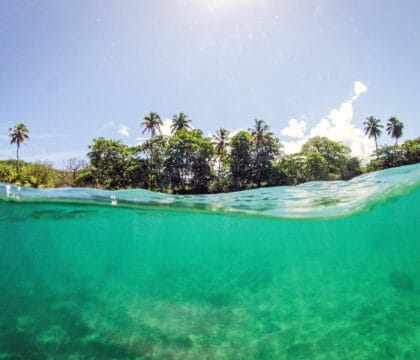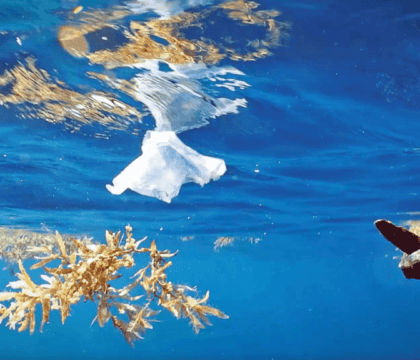September 28, 2015 • Trip Reports
A critically endangered Pacific leatherback sea turtle was found dead in the Greater Farallones National Marine Sanctuary on Saturday, September 26, 2015, with rope and polystyrene floats commonly used by crab fishers wrapped completely around the turtle’s massive neck. Scientists from the National Marine Fisheries Service (NMFS) were given the last location of the leatherback and will attempt to recover the carcass for further study.
While crab season has been officially closed since June, hundreds of derelict crab trap floats and ropes still remain at sea, either broken loose or still attached to the heavy steel traps that rest on the sea floor to catch Dungeness crabs. NMFS has received reports of numerous gray, blue, and humpback whales this year entangled in fishing gear.
Marine biologist Dr. Chris Pincetich spotted the dead turtle while leading an Oceanic Society whale watching cruise from San Francisco to the Farallon Islands on Sunday. Dr. Pincetich, who also works globally to protect sea turtles and specializes in understanding and working to combat the impacts or ocean debris, said,
“I’m still in shock that the first, and only, Pacific leatherback I’ve ever seen in California waters was floating dead, killed by marine debris. One of my worst fears has come true.”
Marine debris entanglement and ghost fishing are among the greatest threats to many marine species including sea turtles, marine mammals, and seabirds. Sea turtles and whales that become entangled in marine debris can be injured by ropes, exhausted from dragging extra weight, starved by their inability to hunt or feed, or succumb to the injury caused by the entanglement. Some U.S. states, like Oregon, sponsor programs to incentivize the timely retrieval of abandoned bottom-trap fishing gear. In California, several non-profits recover lost fishing gear, but there is more work to be done, especially in the Greater Farallones and Monterey Bay National Marine Sanctuaries.
Leatherback sea turtles are protected throughout U.S. waters as an Endangered Species, and much of the ocean offshore of central California is designated as protected critical habitat for leatherback turtles under the Endangered Species Act. Leatherbacks are the largest of all sea turtle species and migrate to California from across thePacific Ocean each summer after leaving their breeding and nesting areas in Indonesia and Papua New Guinea. The leatherback sea turtle and California gray whale are California’s official state marine reptile and marine mammal, respectively. Dr. Pincetich co-authored the bill that designated the leatherback as the state marine reptile in 2012.
“Leatherbacks are spectacular animals, and their Pacific populations are among the most threatened on Earth,” said Roderic Mast, President of Oceanic Society and Chair of the International Union for Conservation of Nature (IUCN) Species Survival Commission’s Marine Turtle Specialist Group. “It is a shame to see them fall prey to preventable human threats right here in California.”




